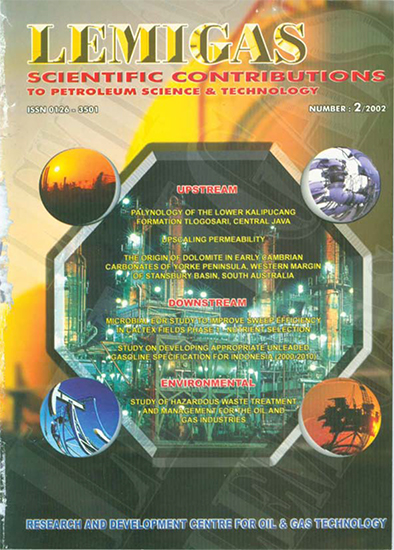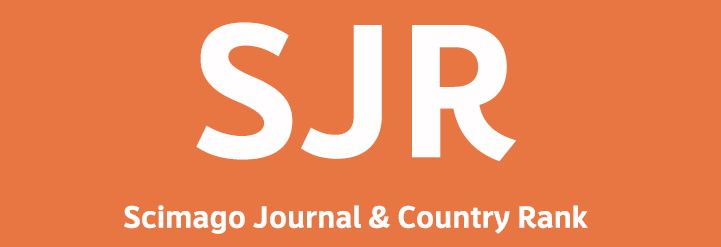MICROBIAL EOR STUDY TO IMPROVE SWEEP EFFICIENCY IN CALTEX FIELDS PHASE 1 – NUTRIENT SELECTION
DOI:
https://doi.org/10.29017/SCOG.25.2.1067Keywords:
Microbial, Sweep Efficiency, Nutrient SelectionAbstract
The objective of this research is to find a cost effective nutrient that will stimulate the growth of in-situ microbes in Caltex Pacific Indonesia (CPI) oil fields to create sufficient biological products to plug high-permeability reservoir thief zones. If successful, injection fluids may be diverted into unswept regions of the reservoir, increasing the sweep efficiency und extending the production life of watered- out oil fields. This paper describes how a wide range of nutrients were researched and tested in the laboratory to achieve the objective. The primary findings of this study show that several primary nutrients were successful at creating bioproducts at high temperature, low salinity, reservoir conditions, and that molasses may be the most cost effective nutrient for all three CPI waterflooded reservoirs tested: Balam South, Bangko, and Minas fields. As a result of this work, laboratory studies were started to see to if the microbial growth created in laboratory test tubes can be recreated within reservoir core plugs to achieve sufficient permeability reduction to justify field trial (s). The core flood process and techniques will be presented in a separate paper.References
American Standards D 5464-93 “Standard Practice for Determining Microbial Colony
Counts from Waters Analyzed by Plating Methodsâ€.
American Standards D 445-88 "Standard Test Method for Kinematic Viscosity of
Transparent and Opaque Liquids"
Anonim, 1972, Food Composition Table for Use in East Asia, U.S Department of
Health, Education, and Welfare U.S. p: 6-101.
Bae, J.H., and Lee, H.O., 1995, A Study of Microbial Profile Modification, in Bryant
and Sublette (Eds.), The Fifth International Conference on Microbial Enhanced Oil
Recovery and Related Biotechnology for Solving Environmental Problems, Oklahoma,
pp. 375 - 388.
Jenneman, G.E., et al., 1994, Application of a Microbial Selective Plugging Process at
the North Burbank Unit: Prepilot Tests and Results, SPE Paper No. 27827.
Jenneman, G.E., et al., 1995, Development and Application of Microbial Selective
Plugging Processes, in Bryant and Sublette (Eds.). The Fifth International Conference
on Microbial Enhanced Oil Recovery and Related Biotechnology for Solving
Environmental Problems, Oklahoma, pp. 7-27.
Portwood,J.T. "A Commercial Microbial Enhanced Oil Recovery Technology
Evaluation of 322 Projects", 1995, SPE Paper No. 29518, pp. 693 - 708.
Sarkar, A.K., et al., 1995, Strength and Stability of Microbial Plugs in Porous Media,
in Bryant and Sublette (Eds.). The Fifth International Conference on Microbial
Enhanced Oil Recovery and Related Biotechnology for Solving Environmental
Problems, Oklahoma, pp. 213-234.
Stepp, A.K., et al., 1995, Biopolymer System for Permeability Modification in Porous
Media, in Bryant and Sublette (Eds.), The Fifth International Conference on Microbial
Enhanced Oil Recovery and Related Biotechnology for Solving Environmental
Problems, Oklahoma, pp. 389- 406.
Stepp. A.K. 1997, "Biotechnology : Alternative Permeability Modification Methods".
Journal of Petroleum Technology. pp. 280- 281
Zhong, L and Islam, M.R., 1995, "A New Microbial Plugging Process and Its Impact
on Fracture Remediation". SPE Paper No. 30159, pp. 703- 715
Downloads
Issue
Section
License
Copyright (c) 1970 SCIENTIFIC CONTRIBUTIONS OIL AND GAS (SCOG)

This work is licensed under a Creative Commons Attribution 4.0 International License.
Authors are free to Share — copy and redistribute the material in any medium or format for any purpose, even commercially Adapt — remix, transform, and build upon the material for any purpose, even commercially.
The licensor cannot revoke these freedoms as long as you follow the license terms, under the following terms Attribution — You must give appropriate credit , provide a link to the license, and indicate if changes were made . You may do so in any reasonable manner, but not in any way that suggests the licensor endorses you or your use.
No additional restrictions — You may not apply legal terms or technological measures that legally restrict others from doing anything the license permits.














